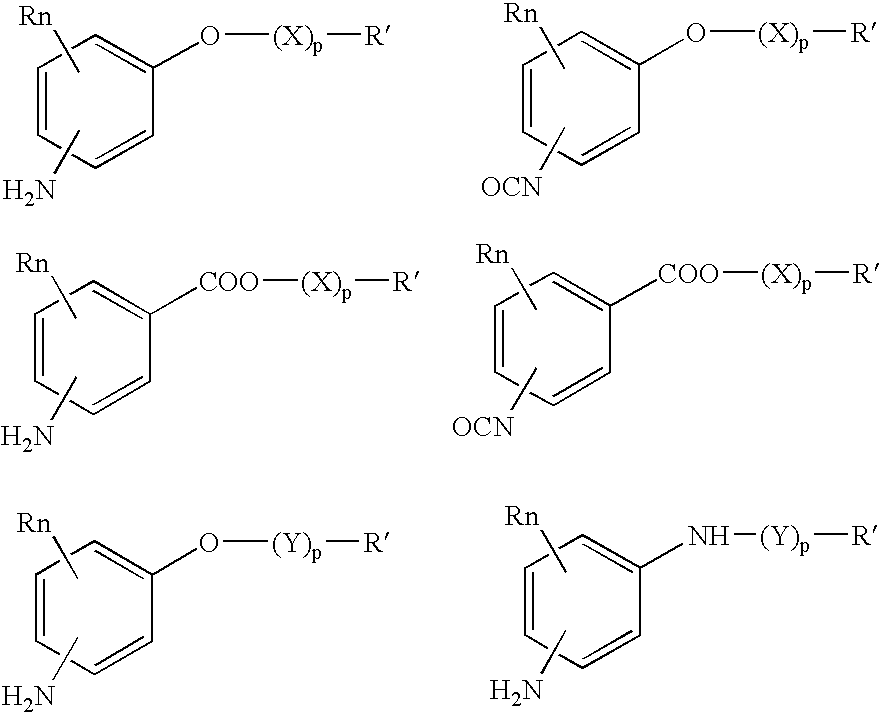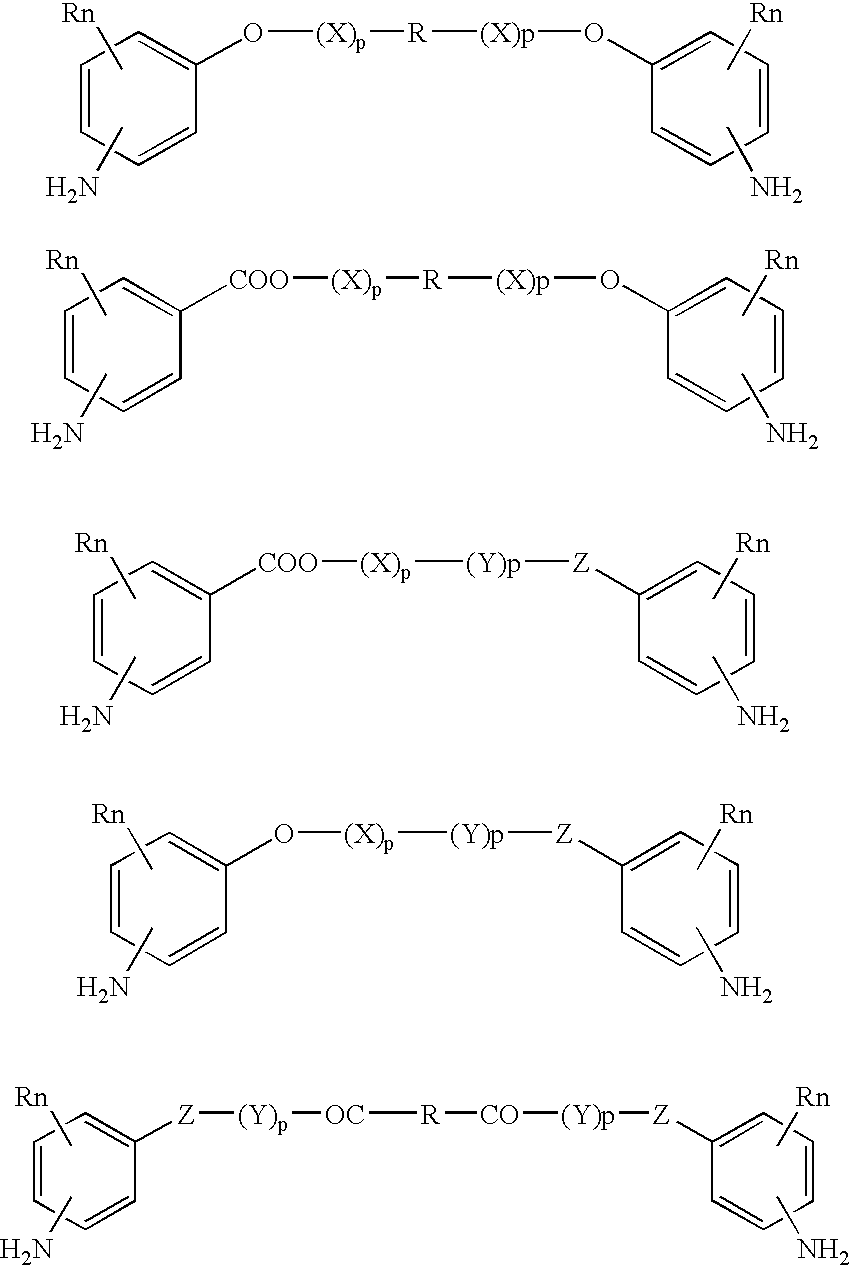Bioabsorbable and biocompatible polyurethanes and polyamides for medical devices
a technology of biocompatible polyurethanes and polyamides, applied in the field of bioabsorbable and biocompatible polyurethanes, can solve the problems of limiting long-term device success, relatively few biodegradable, especially elastomeric, polymers developed which are currently in use, and reducing the use of biodegradable materials, etc., and achieves low toxicity.
- Summary
- Abstract
- Description
- Claims
- Application Information
AI Technical Summary
Benefits of technology
Problems solved by technology
Method used
Image
Examples
example 1
(4-Acetylamino-phenoxy)-acetic acid ethyl ester (1)
[0248]
[0249]Ethyl bromoacetate (452 g, 2.7 mol.) was added to a mixture of paracetamol (300 g, 1.984 mol) and anhydrous K2CO3 (1.80 kg, 7.814 mmol) in anhydrous acetone (3 L) and refluxed for 16 hours. Acetone was distilled and water (5 L) was added. Crude 1 was filtered, dried and recrystallised from a mixture of toluene:hexane (1:5) to give pure 1 (377 grams, 80%) as a white shining powder. The melting point was found to be 104.2-106.2° C.
example 2
(4-Amino-phenoxy)acetic acid HCl (2)
[0250]
[0251](4-Acetylamino-phenoxy)-acetic acid ethyl ester 1 (375 grams, 1.582 mmol), in concentrated Hydrochloric acid (9.36 liters) was refluxed for 12 Hours. Excess concentrated Hydrochloric acid was distilled off in vacuum and filtered hot. The mixture was cooled to 10° C., filtered and dried to give pure 2(250 g, 77.6%) as a wheat colored powder.
[0252]M.p: 224-226° C.; 1HNMR (D2O) δ 4.68 (s, 2H, OCH2), 3.65 (s, 3H, ester), 7.0 (d, 2H, Ar), 7.30 (d, 2H, Ar)
example 3
(4-Amino-phenoxy)-acetic acid methyl ester (3)
[0253]
Method A
[0254]Through a mixture of (4-Amino-phenoxy) acetic acid HCl 2 (250 g, 1.228 mol) in methanol (5 liters) was passed dry HCl gas at 10° C. for one hour and refluxed for ten hours. Methanol (3.5 liters) was distilled off and ice water (1 liter) was added and the pH was adjusted to 7.5 with K2CO3. Crude 3 was filtered, dried and recrystallized from a mixture of chloroform:hexane (1:5) to give pure 3 (130 g, 58.5%) as a light brown powder
Method B
[0255]Methyl (4-nitrophenoxy) acetate 7 (30 grams, 142.18 mol) was dissolved in methanol (150 ml) in a pressure vessel. Raney nickel (20 g) was added and the mixture stirred under atmosphere of hydrogen (4 kg) for 8 hours. Catalyst was removed by filtration and methanol distilled off under vacuum. Crude 3 was purified by column chromatography on silica gel using chloroform as eluant to get pure 3 (22 grams, 85.5%) as a light brown powder.
[0256]M.p: 65-66.8° C.; 1HNMR (CDCl3) δ 3.04 (bs,...
PUM
| Property | Measurement | Unit |
|---|---|---|
| Young's Modulus | aaaaa | aaaaa |
| Young's Modulus | aaaaa | aaaaa |
| tear strength | aaaaa | aaaaa |
Abstract
Description
Claims
Application Information
 Login to View More
Login to View More - R&D
- Intellectual Property
- Life Sciences
- Materials
- Tech Scout
- Unparalleled Data Quality
- Higher Quality Content
- 60% Fewer Hallucinations
Browse by: Latest US Patents, China's latest patents, Technical Efficacy Thesaurus, Application Domain, Technology Topic, Popular Technical Reports.
© 2025 PatSnap. All rights reserved.Legal|Privacy policy|Modern Slavery Act Transparency Statement|Sitemap|About US| Contact US: help@patsnap.com



